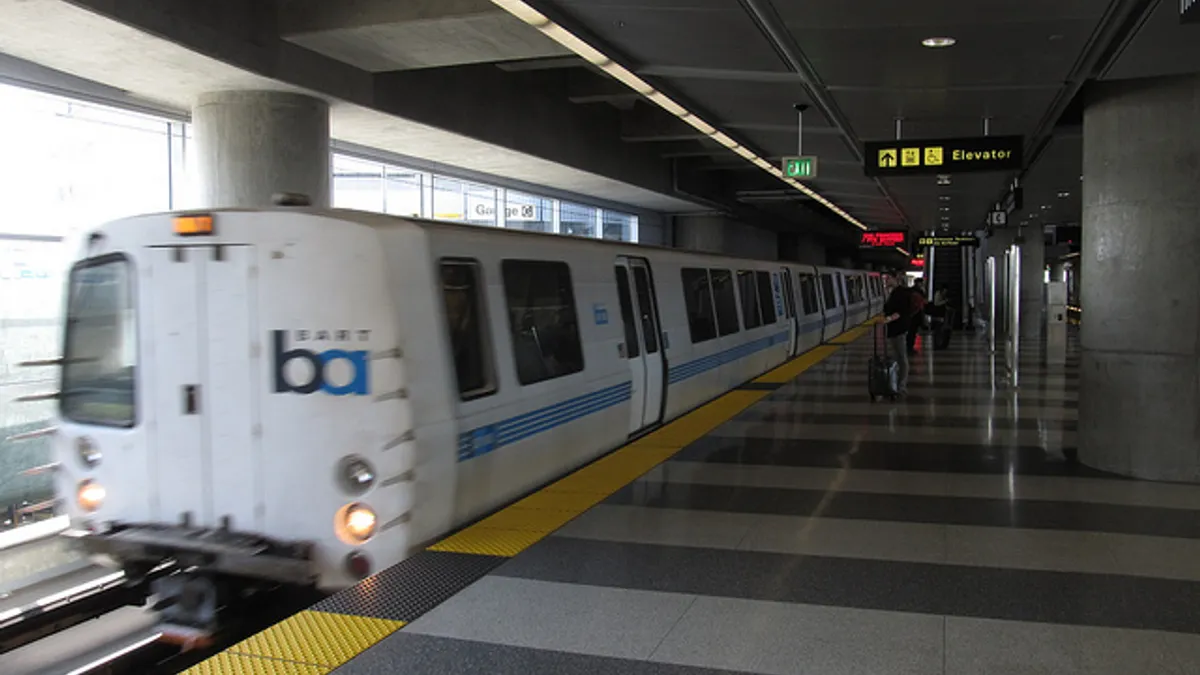Dive Brief:
- San Francisco's Metropolitan Transportation Commission (MTC) has approved a $461 million contract to upgrade its transit fare payment system. MTC awarded the contract to Cubic Transportation Services, which already operates the region's Clipper fare payment system as well as those in cities including Boston, Chicago and New York City.
- The new system will include a mobile app to allow riders to pay fares and reload accounts with their mobile devices. Equipment will be upgraded in hundreds of transit stations and on 3,500 buses and light rail vehicles. MTC wants the new system to integrate better with alternative transportation, such as bike-share and paratransit.
- The first improvements are scheduled for next year and the mobile app should go live in 2020. The full system redesign is expected to be complete in 2021 and all customers should be transitioned to the new system by 2023.
Dive Insight:
The 22 San Francisco area transit agencies using the plastic Clipper cards have been steadily encouraging riders to transition to the longer-lasting cards while paper fare cards get phased out. Early this year Bay Area Rapid Transit (BART) implemented a 50-cent surcharge on each paper fare card.
The new mobile-centric system will allow better pricing and payment coordination for the multiple regional transit agencies. The system will be able to handle fare increases or promotions more easily and seamlessly while also giving customers better trip information. Those benefits helped prompt Washington, DC to add mobile payments, expected to roll out next year.
Complete details about San Francisco's system upgrades still are forthcoming, but if it's like the modernization for the Los Angeles account-based TAP system, it could consider transit equity. L.A.'s upgrades will allow unbanked customers to refill their virtual accounts with cash at neighborhood convenience stores.
Eventually, the app-based nature of the program and the ability to easily add on new features should pave the way toward meeting MTC's goal of better integration with alternative modes of transit.












